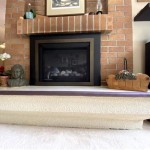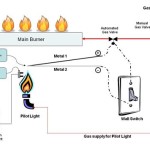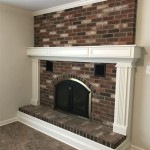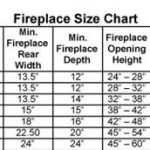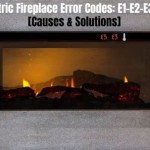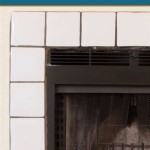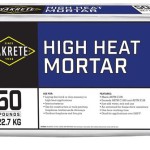```html
Stand Alone Ventless Gas Fireplaces: A Comprehensive Guide
Stand-alone ventless gas fireplaces offer a convenient and aesthetically pleasing heating solution for various living spaces. Unlike traditional fireplaces that require chimneys or venting systems, these units operate without the need for external exhaust, simplifying installation and expanding placement options. This article provides a detailed overview of stand-alone ventless gas fireplaces, covering their functionality, advantages, safety considerations, and maintenance requirements.
The fundamental principle behind ventless gas fireplace operation lies in their highly efficient combustion process. These fireplaces are engineered to burn propane or natural gas so completely that they produce minimal levels of carbon monoxide (CO), nitrogen dioxide (NO2), and unburned hydrocarbons. The units are typically equipped with oxygen depletion sensors (ODS) which automatically shut off the gas supply if the oxygen levels in the room drop to a potentially hazardous level. This safety feature is crucial for mitigating the risk of carbon monoxide poisoning.
Choosing a stand-alone ventless gas fireplace involves several considerations, including heating capacity, style, and fuel type. Heating capacity is measured in British Thermal Units (BTUs), with higher BTU ratings indicating greater heating potential. The appropriate BTU rating will depend on the size of the room being heated and the desired temperature increase. Style options range from traditional to contemporary designs, ensuring compatibility with a variety of interior decors. Finally, the choice between propane and natural gas will depend on the availability of natural gas lines and personal preferences.
Key Point 1: The Mechanics and Advantages of Ventless Operation
The primary advantage of stand-alone ventless gas fireplaces is their ease of installation. Because they do not require venting, they can be placed virtually anywhere in a room that has adequate space and meets the manufacturer's clearance requirements. This flexibility contrasts sharply with traditional fireplaces, which necessitate extensive construction to accommodate a chimney or vent. The absence of venting also contributes to higher energy efficiency. In vented fireplaces, a significant amount of heat escapes through the chimney, reducing overall heating effectiveness. Ventless fireplaces, on the other hand, radiate heat directly into the room, minimizing heat loss and maximizing energy savings.
The operational mechanism of a ventless gas fireplace is focused on achieving nearly complete combustion. The burner design, often incorporating ceramic logs or other radiant elements, promotes efficient burning of the gas fuel. As the gas burns, it heats the surrounding air and objects, providing radiant heat to the room. The ODS serves as a crucial safety component, continuously monitoring oxygen levels. If oxygen levels decrease below a pre-determined threshold, the ODS will shut off the gas supply, preventing the buildup of carbon monoxide. The design also incorporates features to prevent gas leaks and ensure safe operation.
Beyond ease of installation and improved energy efficiency, ventless gas fireplaces offer aesthetic benefits. They are available in a wide range of styles, from rustic to modern, allowing homeowners to select a unit that complements their existing décor. Many units feature realistic flame patterns and ember beds, creating a cozy and visually appealing atmosphere. The ability to place these fireplaces in various locations also allows for greater design flexibility within a room.
Key Point 2: Safety Considerations and Mitigation Strategies
While ventless gas fireplaces are designed with safety in mind, it is essential to understand the potential risks and implement appropriate mitigation strategies. The primary concern associated with these units is the potential for carbon monoxide buildup. While the ODS is designed to prevent this, it is crucial to ensure that the fireplace is properly installed and maintained, and that the room is adequately ventilated.
Adequate ventilation is essential for the safe operation of ventless gas fireplaces. It is recommended to open a window or door slightly when the fireplace is in use, especially in smaller rooms. This allows for fresh air to circulate and helps to maintain adequate oxygen levels. It is also crucial to follow the manufacturer's instructions regarding room size and ventilation requirements. Exceeding the recommended BTU rating for the room can increase the risk of carbon monoxide buildup.
Regular maintenance is also crucial for ensuring safe and efficient operation. This includes cleaning the burner assembly, inspecting the ODS, and checking for gas leaks. It is recommended to have the fireplace inspected and serviced by a qualified technician annually. Carbon monoxide detectors should be installed in the room where the fireplace is located, as well as in adjacent rooms. These detectors should be tested regularly to ensure they are functioning properly.
Key Point 3: Proper Installation, Maintenance, and Operational Best Practices
Proper installation is paramount to ensuring the safe and efficient operation of a stand-alone ventless gas fireplace. It is highly recommended that installation be performed by a qualified professional who is familiar with local building codes and safety regulations. Incorrect installation can compromise the safety features of the fireplace and increase the risk of carbon monoxide poisoning.
The installation process typically involves connecting the fireplace to a gas supply line, ensuring that the gas connections are leak-proof, and verifying the proper operation of the ODS. The fireplace should be placed on a non-combustible surface and away from flammable materials, adhering to the manufacturer's clearance requirements. Proper ventilation should be assessed and addressed during the installation process, taking into account the size of the room and the BTU rating of the fireplace.
Regular maintenance is essential for ensuring the longevity and safe operation of a ventless gas fireplace. This includes cleaning the burner assembly to remove any dust or debris that may accumulate over time. The ODS should be inspected regularly to ensure that it is functioning properly. Gas connections should be checked periodically for leaks. Any signs of damage or malfunction should be addressed immediately by a qualified technician. Adhering to the manufacturer's recommended maintenance schedule will help to ensure that the fireplace operates safely and efficiently for many years.
```
50 Free Standing Ventless Gas Fireplace Visualhunt

Empire Vent Free Stove Bedroom Approved Fine S Gas

Radiance Vent Free Gas Stove The Place

50 Free Standing Ventless Gas Fireplace Visualhunt

Kingsman Vent Free Gas Stove Fvf350 Hvacdirect Com

Duluth Forge Dual Fuel Ventless Gas Fireplace 26 000 Btu T Stat Control Antique White Finish 170130 The Home Depot

Ventless Gas Fireplace Propane

Free Standing Gas Stoves Hearth And Home Pe

Duluth Forge Dual Fuel Ventless Gas Fireplace 32 000 Btu Remote Control Antique White Finish Com

Duluth Forge Dual Fuel Ventless Gas Fireplace 26 000 Btu Remote Control Antique White Finish 170105 The Home Depot
Related Posts

